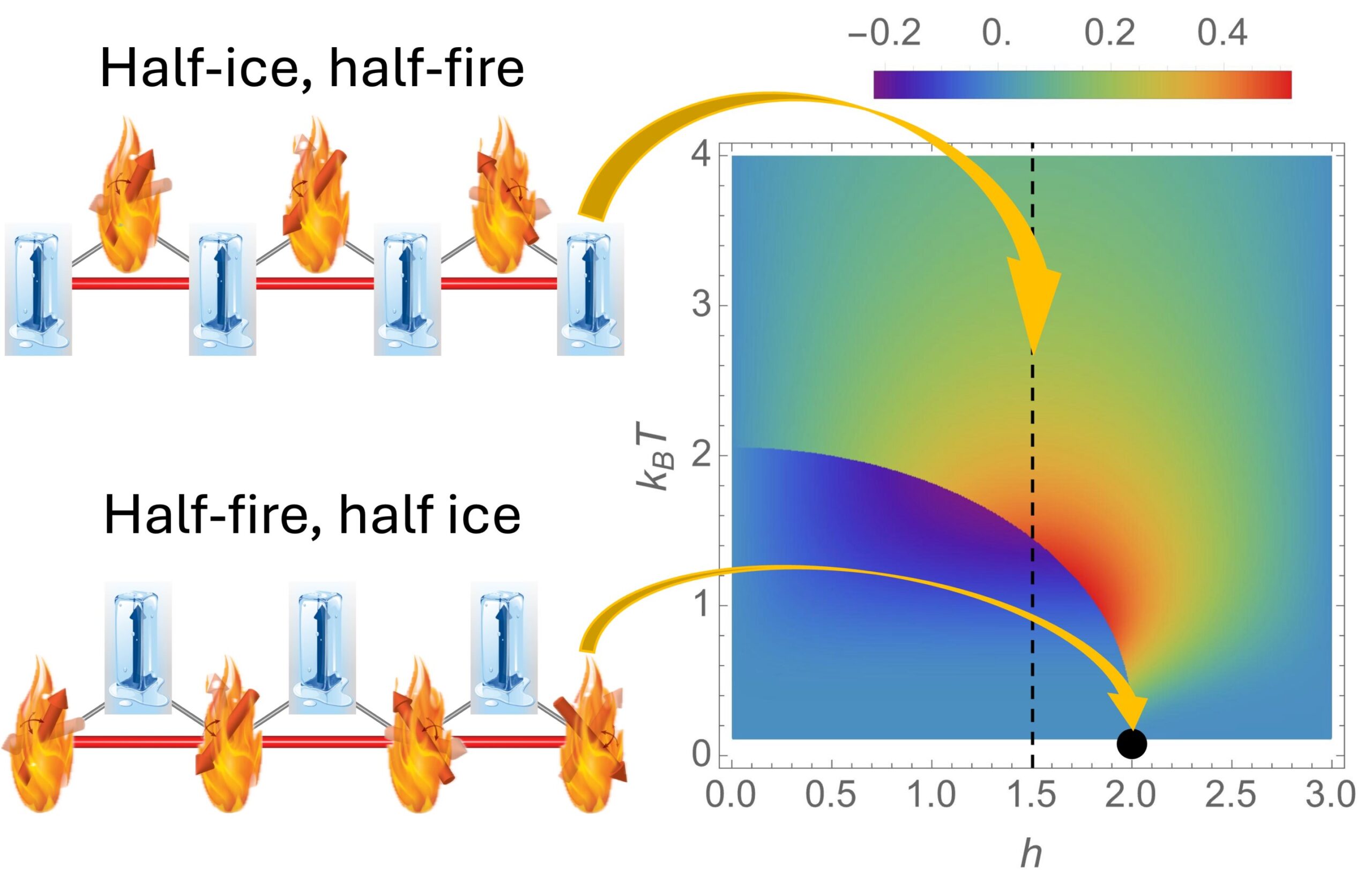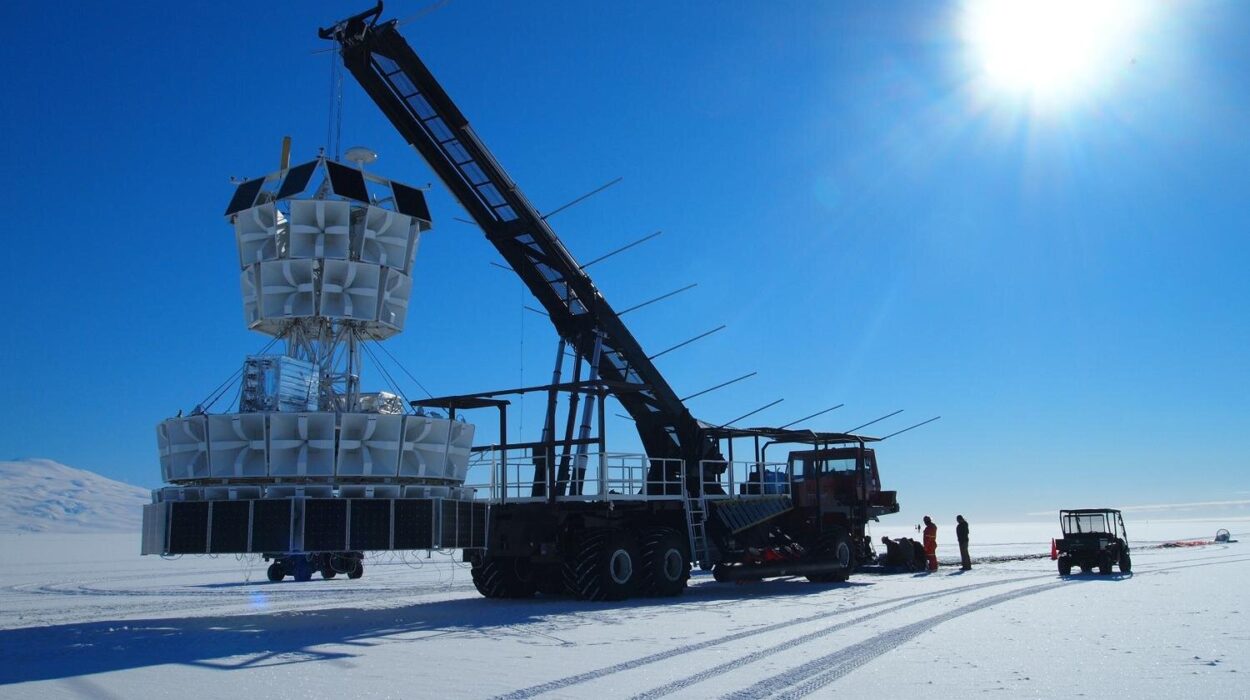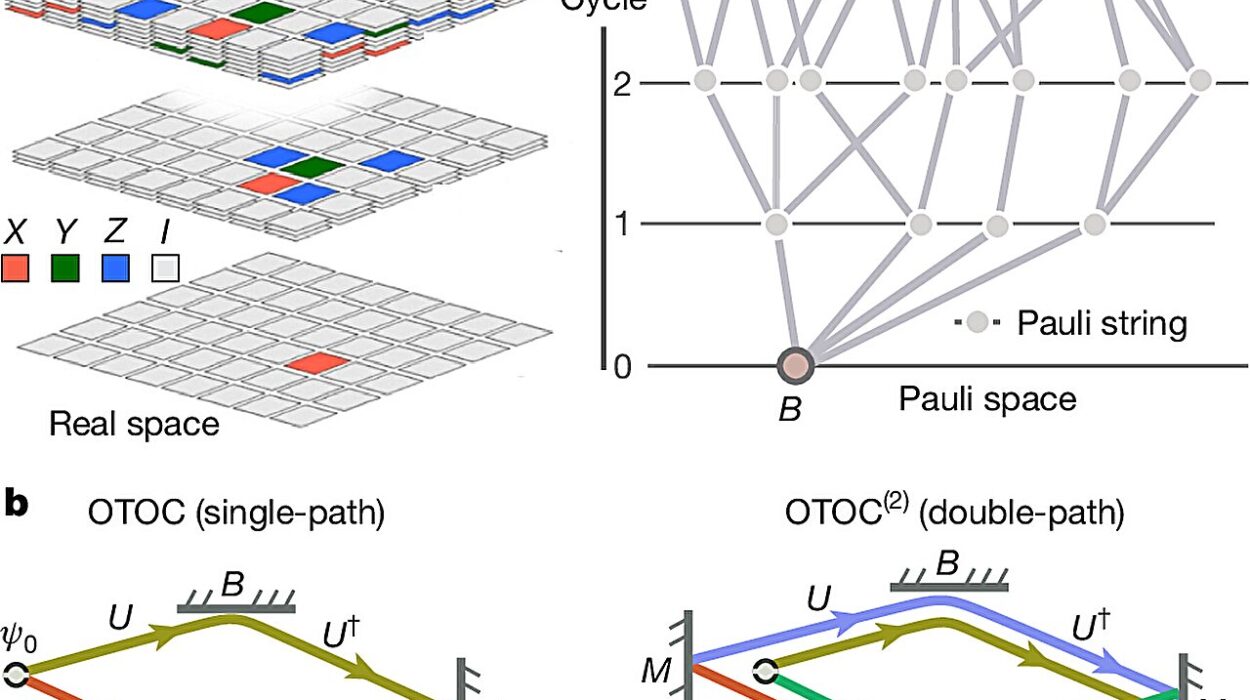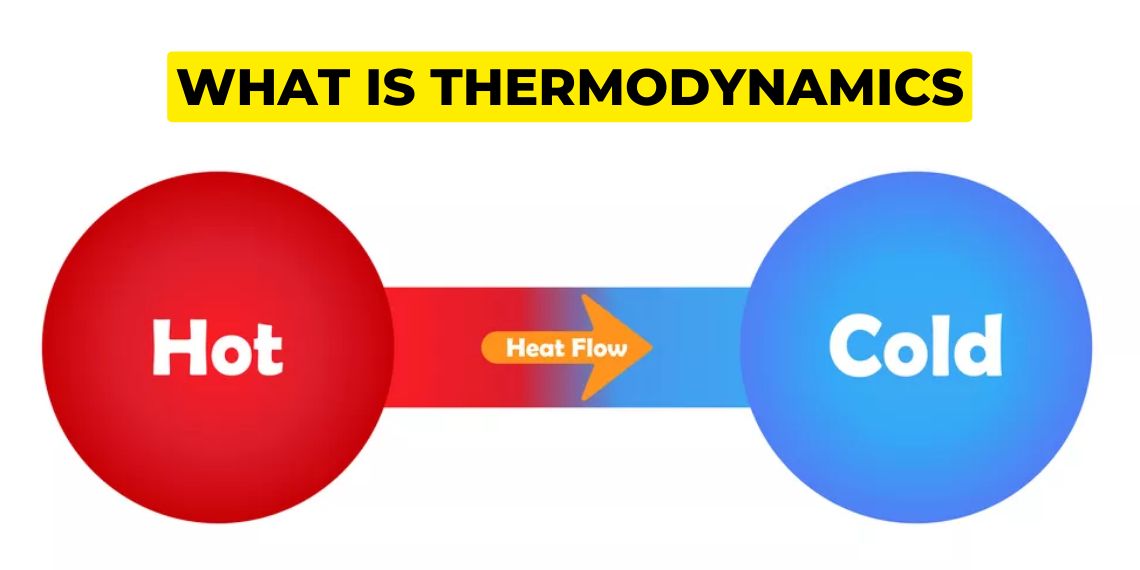In a groundbreaking discovery, two scientists at the U.S. Department of Energy’s (DOE) Brookhaven National Laboratory have identified a new and previously unseen phase of matter. This discovery involves the unique arrangement of electron spins in a magnetic material, and its potential applications could reshape future technologies in energy and information systems. Dubbed “half ice, half fire,” this new phase represents a stunning development in condensed matter physics and promises to unlock new possibilities in fields like quantum computing and spintronics.
The Journey to Discovery: Unraveling Magnetic Mysteries
The team of researchers, Weiguo Yin and Alexei Tsvelik, made this remarkable finding while studying a one-dimensional model of a magnetic material known as a ferrimagnet. Ferrimagnets, a class of materials that are magnetically ordered but feature unequal opposing magnetic moments, have long been a subject of interest for their unique magnetic properties. The newly discovered phase, “half ice, half fire,” is an intricate arrangement of electron spins that combines two seemingly contradictory features: highly ordered “cold” spins and highly disordered “hot” spins.
This phase is unlike any that has been observed in previous research. In typical magnetic systems, electrons have a characteristic “spin,” which refers to their magnetic moment that can be oriented in either an “up” or “down” direction, creating a fundamental aspect of their behavior in a magnetic field. In the “half ice, half fire” phase, the spin structure is composed of two distinct regions: one where spins are highly ordered, like “cold” spins, and another where spins are chaotic and disordered, akin to “hot” spins. This novel combination gives the phase its fiery and icy distinction, and it is a pattern never before documented in any other material.
What Makes “Half Ice, Half Fire” Special?
This new phase is not only significant because it has never been seen before, but also because of its remarkable ability to induce extremely sharp transitions between different states in the material at a reasonably finite temperature. This characteristic of the phase switching quickly and efficiently could have far-reaching implications for the future of technology, especially in the fields of energy and information storage.
Yin and Tsvelik’s research, which was published in the prestigious Physical Review Letters on December 31, 2024, has unveiled a new landscape for materials science. The ability of materials to switch between phases with high precision and at manageable temperatures could lead to significant advances in technologies such as quantum computing and spintronics—fields where the manipulation of electron spins is key.
As Yin explains, “Finding new states with exotic physical properties—and being able to understand and control the transitions between those states—are central problems in condensed matter physics and materials science.” He further adds that these discoveries could lead to breakthroughs in quantum computing, where controlling the states of particles at the quantum level could vastly increase computational power, or in spintronics, where electron spins are harnessed for memory and processing.
The Preceding Work: Fire and Ice in Magnetic Systems
The discovery of the “half ice, half fire” phase is not the first foray into the fire-ice phenomenon by the team at Brookhaven. In fact, the “half fire, half ice” phase was uncovered earlier, in 2015, by Yin, Tsvelik, and Christopher Roth, a former undergraduate summer intern now working as a postdoc at the Flatiron Institute. This earlier work, also published in Physical Review Letters, described a similar phenomenon in the same material system, but with the positions of the “hot” and “cold” spins reversed.
However, the true story behind this discovery goes back even further, to 2012, when Yin and Tsvelik, along with other researchers, were part of a multi-institutional collaboration studying Sr3CuIrO6, a magnetic compound consisting of strontium, copper, iridium, and oxygen. This collaboration, which included experiments and theoretical studies, set the stage for understanding the complex behavior of spins in these materials.
The first breakthrough came in 2016 when the researchers observed the “half fire, half ice” phase in Sr3CuIrO6, induced by an external magnetic field. In this state, the spins on the copper sites were disordered and smaller in magnetic moment, while the spins on the iridium sites were fully ordered and larger in magnetic moment. This discovery, published in Physical Review B, was a significant step forward, but the team still faced the challenge of understanding how such a phase could be harnessed for practical applications, especially given that conventional models, such as the Ising model of ferromagnetism, did not predict finite-temperature phase transitions in such systems.
The Key to the Puzzle: A Forbidden Phase Transition
Despite years of research into the phase behaviors of Sr3CuIrO6, Yin and Tsvelik were left with critical pieces of the puzzle missing. As Tsvelik recalls, “We were missing pieces of the puzzle.” They knew that the one-dimensional Ising model, a well-established mathematical model for ferromagnetic systems, did not exhibit finite-temperature phase transitions, which made understanding the sharp transitions between phases in these materials difficult.
The breakthrough came when Yin identified a crucial element in the system. Through his work, Yin demonstrated that the forbidden phase transition observed in earlier models could, in fact, be approached through an ultranarrow phase crossover at fixed finite temperatures. This insight allowed them to make sense of how the “half fire, half ice” state could exist in a system that appeared to defy conventional models.
The New Discovery: “Half Ice, Half Fire” and Its Potential Applications
Building on this insight, Yin and Tsvelik discovered that the “half fire, half ice” phase had a hidden twin phase, where the “hot” and “cold” spins switch places. In this new phase, now dubbed “half ice, half fire,” the previously disordered “hot” spins become fully ordered, and the “cold” spins become disordered. This switching mechanism, occurring over a very narrow temperature range, is what sets this new phase apart.
This discovery is not just a theoretical curiosity. The researchers have already suggested possible practical applications for the “half ice, half fire” phenomenon. One potential use is in refrigeration technologies, where the sharp switching between phases could drive a giant magnetic entropy change—allowing for more efficient cooling systems. The phenomenon may also pave the way for novel quantum information storage technologies, where different phases of matter could serve as “bits” in a quantum computer, potentially revolutionizing data storage and processing capabilities.
Yin is already planning the next phase of exploration. “Next, we are going to explore the fire-ice phenomenon in systems with quantum spins and with additional lattice, charge, and orbital degrees of freedom,” he says. This next step could open up entirely new areas of research and application. As Tsvelik points out, “The door to new possibilities is now wide open.”
Implications for the Future: A New Frontier in Physics
This discovery is a milestone in condensed matter physics, opening new doors for understanding and manipulating phase transitions in materials. The ability to switch between phases with unprecedented precision at finite temperatures could have far-reaching applications in quantum technologies, materials science, and beyond.
As we continue to push the boundaries of what is possible with advanced materials, Yin and Tsvelik’s research provides a glimpse into a future where phase transitions are not only understood but can be controlled and harnessed for practical technologies. The “half ice, half fire” phase is just the beginning of what promises to be a transformative era in physics and technology. With the potential for new cooling systems, quantum information storage, and even revolutionary computing technologies, the future looks brighter—and hotter—than ever before.
In the end, this discovery is not just about understanding the behavior of spins in a material—it’s about unlocking the secrets of the universe’s building blocks and using them to shape the future.
Reference: Weiguo Yin et al, Phase Switch Driven by the Hidden Half-Ice, Half-Fire State in a Ferrimagnet, Physical Review Letters (2024). DOI: 10.1103/PhysRevLett.133.266701. On arXiv: arxiv.org/html/2401.00948v2






